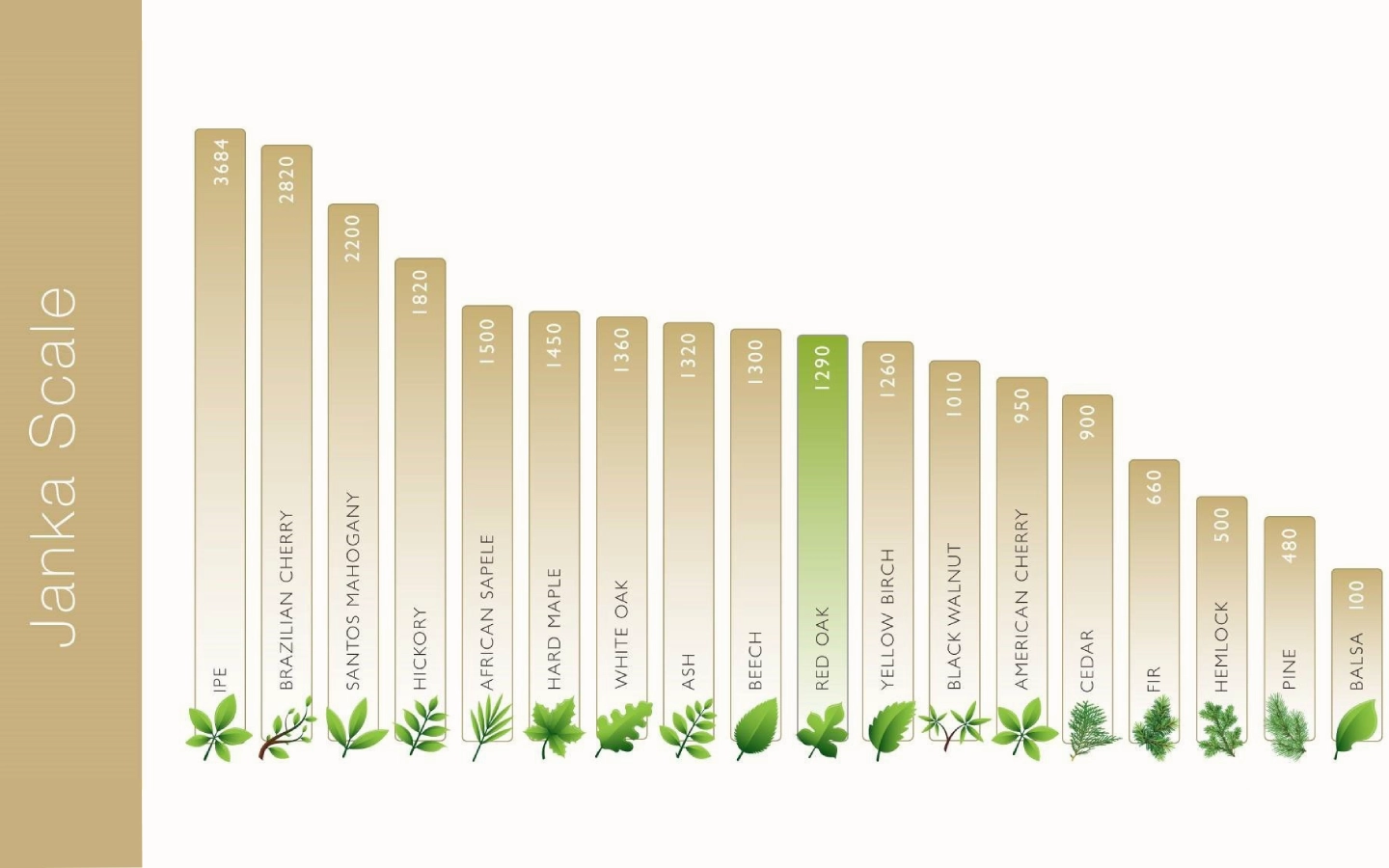What Is Janka Hardness Rating Scale For Wood?

As all we know, there are many kinds of woods all around the world. From ancient times till now, people around the world have used the Woods to build homes and various tools. The kind of wood that will be used in a specific Project should have enough hardness to withstand the incoming pressures and forces from the environment. For measuring the hardness of any kind of wood, there is a scale that is well-known all around the world.
Janka hardness rating is a scale that shows the hardness of any type of wood to be used in different projects. If you want to know about the Janka hardness scale and how it works, you can keep Reading the following article.
What is the Janka hardness scale?

The Janka hardness rating is a widely used scale in the Wood industry that measures the hardness of common woods for use in different woodworking projects. This scale was first invented in 1906 by Gabriel Janka. He was an Austrian food researcher who assessed many kinds of Wood materials to measure their resistance to dents and wear. This type of wood hardness scale measures the amount of force needed to drive a one-centimeter Steel ball into the wood.
This steel ball will be forced into the wood to create a hemispherical depression with an area of 200 Square millimeters in the Wood sample. The greater the force required to form this depression, the larger the Janka hardness rating would be.
Janka Hardness Test
In the Janka hardness rating, the wood is placed in a flat and horizontal direction. So, the steel ball should be forced into the wood from the upper surface of the sample wood. The harder the wood, the more energy will be required to drive the steel ball into it. The unit of measurement of the Janka hardness rating is different in different countries. For example, in America, it is expressed in pounds per force; in Sweden, it is expressed in kilograms per force; and in Australia, it is expressed in newtons.
When choosing a flooring, the Janka hardness scale informs the buyer about the strength of the floor and its level of wear and tear. Of course, this is only a recommendation and does not affect the appearance or durability of the product. The Janka hardness rating guarantees the stability and preservation of the wood’s new appearance.
Tip: The pros and cons of pine wood
American Wood Hardness Chart:
While there’s no universal chart, we can provide some typical Janka hardness rating values for various wood species:
| Type of wood | degree of Janka hardness (in lbf) |
| Ebony wood | 3220 |
| East Asian rosewood | 2440 |
| Brazilian cherry wood | 2820 |
| Muscovite wood | 2345 |
| Mahogany wood | 2200 |
| Cameron wood | 1940 |
| Wood Purple Hart | 1860 |
| Tigerwood | 1850 |
| Hickory and Pecan wood | 1820 |
| Rosewood | 1780 |
| African mahogany | 1725 |
| Locust wood | 1700 |
| Veng wood | 1630 |
| Red pine wood | 1630 |
| Zebra wood | 1575 |
| Pub True Pine | 1570 |
| Birchwood | 1470 |
| Maple wood | 1450 |
| Kentucky wood, | 1390 |
| Bamboo wood | 1380 |
| Australian Cypress wood | 1375 |
| White oak wood | 1360 |
| Wood ash wood | 1320 |
| American beech wood | 1300 |
| Red oak wood | 1290 |
| Caribbean Heart Pine | 1280 |
| Yellow beech wood | 1260 |
| Yellow Heart Pine wood | 1225 |
| Carbonized bamboo wood | 1180 |
| Cocobolo wood | 1136 |
| American walnut wood | 1010 |
| American cherry wood | 950 |
| Maple wood | 950 |
| Cedarwood | 900 |
| Southern Yellow Pine | 870 |
| American Red Elm wood | 860 |
| Lacewood | 840 |
| Mahogany wood | 800 |
| Komaro wood | 790 |
| S. Yellow Pine wood | 690 |
| Douglas fir wood | 660 |
| Sassafras wood | 630 |
| Pinewood | 620 |
| Larch wood | 590 |
| Cypress wood, Southern | 570 |
| Chestnut wood | 540 |
| Fir wood | 540 |
Janka hardness rating calculator:
Unfortunately, there isn’t a specific Janka rating calculator available. You can easily use the Janka hardness rating chart to inform about the hardness of any type of common wood in use. If you are looking for a reliable flooring outlet in San Jose that offer the highest quality of wood flooring you can contact Flooring Outlet and More or you can visit our showroom to see the samples.



Did you find what you were looking for?